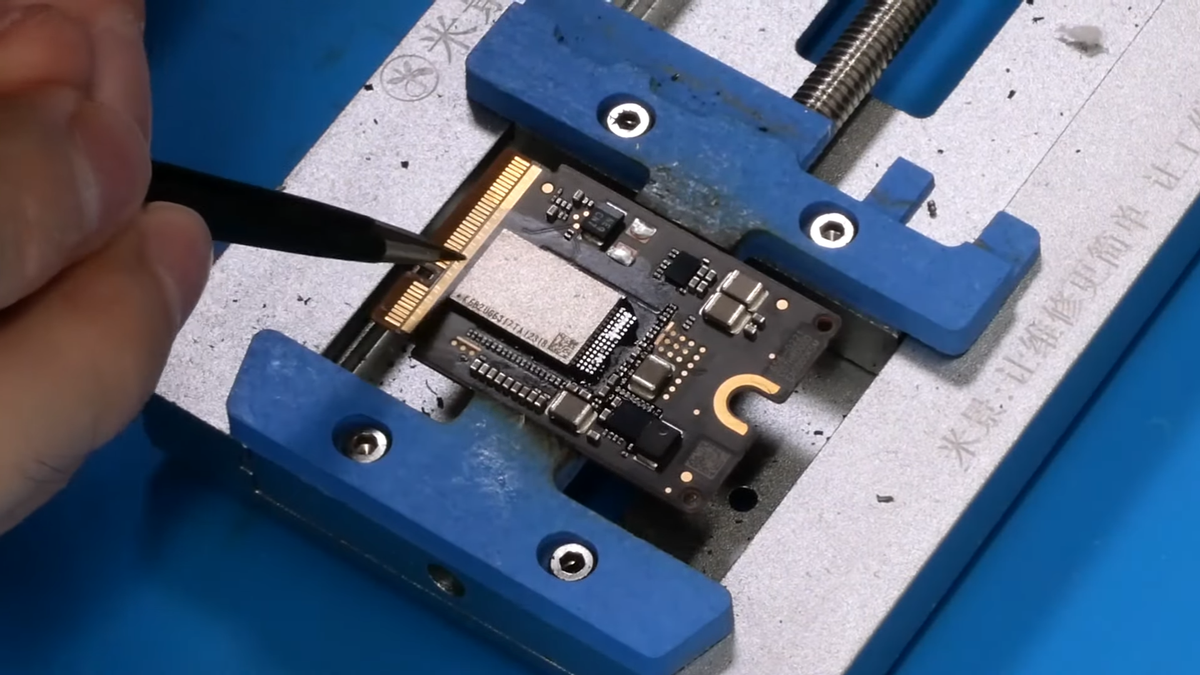Apple’s latest M4 Mini features NAND modules that can be upgraded if you’re proficient enough in micro-soldering, as dosdude1 shows in his latest machine teardown.
The M4 Mac Mini starts at just $599, putting many Windows machines to shame in terms of performance and pricing. But like all Apple machines, these are not self-serviceable and upgradable—starting with a paltry 256GB of SSD storage.
Users looking for higher capacities must pay a pretty penny since the 512GB version starts at $799, with a $200 upcharge for 256GB of extra storage. And for the unseasoned, this isn’t like the desktop landscape where you could swap in your old SSD with a fancier, faster, and larger version. The NAND modules are soldered onto a PCB, and the memory controller is on the SoC. Better yet, older designs had the entire assembly packaged onto the SoC – so any severe damage would’ve rendered the system as good as dead.
Like the Mac Studio, the M4 Mac Mini has a PCB with two NAND chips – one at the front and one at the back. Theoretically, you could swap these two modules and replace them with more capacity.
However, Apple employs a firmware lock that ties the serial number of each module with the controller on the SoC, so you cannot reuse already-programmed NAND modules from a spare machine. The user desoldered the existing NAND chips and replaced them with two blank 1TB “K6B2” NAND modules, as these chips were known to work with the MacBook Air M3 and even the iPhone 14, 15, and 16.

The first attempt didn’t go as planned since one of the chips was a dud. After attempting the process again with two 512GB chips (1TB) and setting everything up, the system booted and reported “994GB” of storage—a great success! A quick search on AliExpress shows that you can obtain these chips for roughly $100, but we’re not suggesting you do so since this process is not intended for the average consumer.
The takeaway is that blank or unused NAND chips can work with Apple’s proprietary controller. Still, you need a separate Mac to install the Operating System and might have to perform a DFU reset to restore the controller to factory settings. Such upgrades have been available for a while but come at the cost of potential damage to the system or the proprietary PCB.











